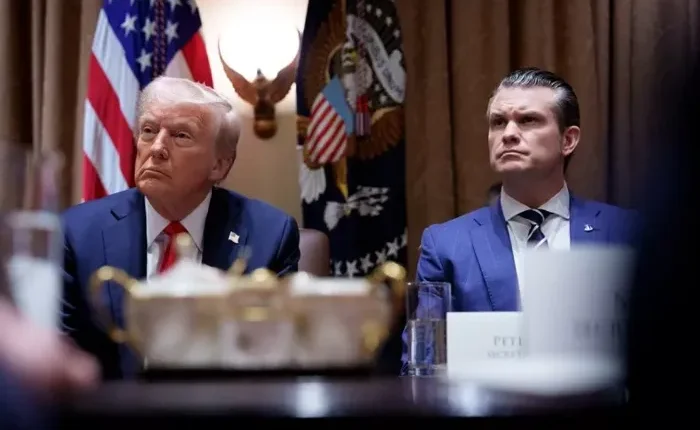WASHINGTON, Oct. 02 (YPA) – The US administration has unveiled a new tone that carries a direct threat to regional security.
The renaming of the Department of Defense to the “Department of War” was not merely a superficial change; it was a clear signal that confrontation has become an overt part of the American strategy.
In a fiery speech delivered to top Pentagon leaders, the Secretary of War, Pete Hegseth, did not just call for “preparing for war.” He articulated an explicit operational vision that included increasing troop levels, accelerating the production of drones and submarines, and expanding space and military capabilities.
Hegseth outright rejected what he described as the “doctrine of non-violence” and dismissed diversity policies and promotions based on criteria other than combat merit.
Such language consistently suggests that diplomatic options are being marginalized in favor of the logic of force.
President Donald Trump himself cast a shadow over the scene with veiled threats against dissenting generals and a clear warning that opponents could lose their ranks and careers if they strayed from the new policy line. This prescription further politicizes the military establishment and undermines the civilian-military balance.
Observers believe that the declaration and political enforcement of this bellicose tone will lead the region to a sequential escalation towards a regional arms race, mutual military and political reactions, and a surge in tensions to levels that local or regional actors may be unable to contain. What begins as a moment of “strength” could rapidly devolve into a quagmire from which there is no escape without a heavy price.
They assert that this shift is ushering the region and the world into a new cycle of instability, with indicators suggesting that Washington no longer sees peace as anything but a gateway through the muzzle of a cannon.
Consequently, the region is poised for further turmoil, as regional powers will find themselves facing a new equation: either engage in an arms race or face the risk of targeting under the banner of “war for peace.”
What is unfolding in Washington today is no longer mere election rhetoric or political maneuvering. It is a transformation that may henceforth usher the region into an extremely dangerous phase, where the landscape will be shaped by the rhythm of the “Department of War,” and the inherent possibilities of protracted conflicts and a further collapse of the already fragile stability framework.
YPA


